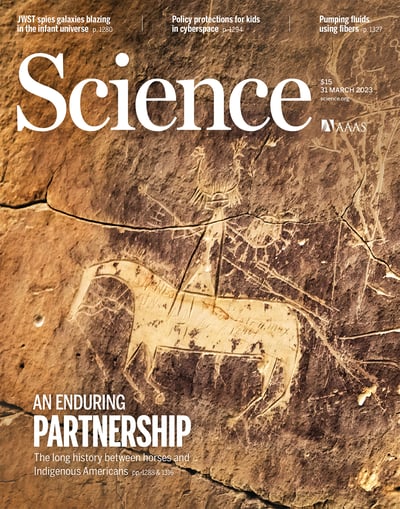Early Dispersal of Domestic Horses into the Great Plains and Northern Rockies
Departmental News
Posted: Apr 05, 2023 - 02:00pm

UNM PhD Alum (2016) Dr. William Taylor, Dr. Emily Jones, Victoria Monagle (Archaeology graduate student), and Caroline Gabe (UNM PhD, 2019) are among the co-authors of a new new article Early Dispersal of Domestic Horses into the Great Plains and Northern Rockies, which garnered the cover of this week's issue of Science.
Horses evolved in North America and dispersed to Eurasia across the Bering Land Bridge. They continued to evolve and were domesticated in Eurasia, but, as far as we know, they became extinct in North America by the late Pleistocene and were then reintroduced by European colonizers. Taylor et al. looked at the genetics of horses across the Old and New Worlds and studied archaeological samples. They found no evidence for direct Pleistocene ancestry of North American horses, but they did find that horses of European descent had been integrated into indigenous cultures across western North America long before the arrival of Europeans in that region. —SNV
Abstract
The horse is central to many Indigenous cultures across the American Southwest and the Great Plains. However, when and how horses were first integrated into Indigenous lifeways remain contentious, with extant models derived largely from colonial records. We conducted an interdisciplinary study of an assemblage of historic archaeological horse remains, integrating genomic, isotopic, radiocarbon, and paleopathological evidence. Archaeological and modern North American horses show strong Iberian genetic affinities, with later influx from British sources, but no Viking proximity. Horses rapidly spread from the south into the northern Rockies and central plains by the first half of the 17th century CE, likely through Indigenous exchange networks. They were deeply integrated into Indigenous societies before the arrival of 18th-century European observers, as reflected in herd management, ceremonial practices, and culture.
